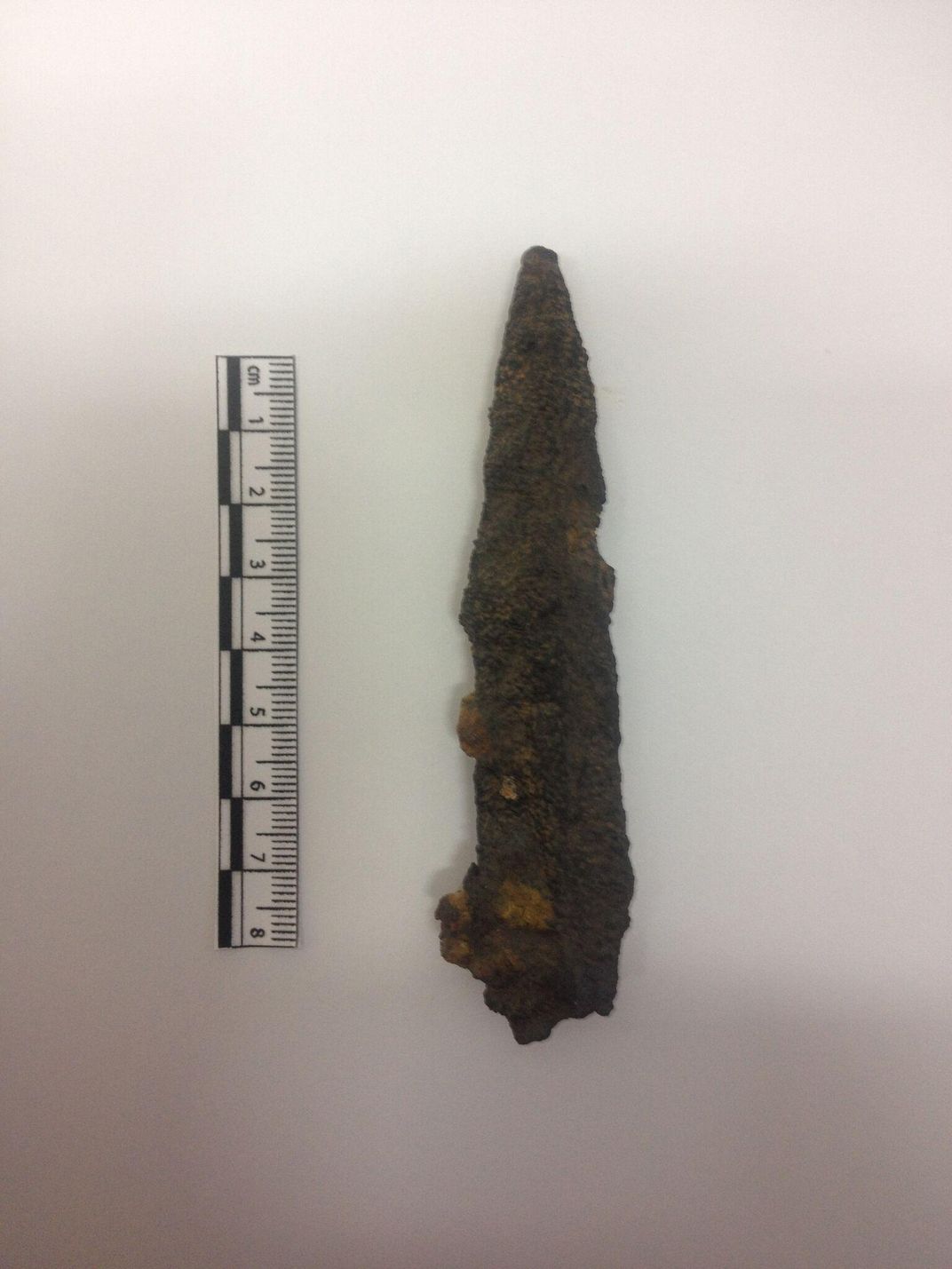Archaeologists Discover Where Julius Caesar Landed in Britain
A large camp along Pegwell Bay is the likely spot where 20,000 Romans landed in 54 B.C.
/https://tf-cmsv2-smithsonianmag-media.s3.amazonaws.com/filer/c8/d7/c8d7f89c-450e-4214-8c2f-7fb705380d30/defenses.jpeg)
Between 58 and 50 B.C., Julius Caesar led his Roman legions through present-day France, Belgium and German lands west of the Rhine in a campaign called the Gallic War. It was a huge success, with a victorious Caesar gaining the wealth, status and expanded borders that came with conquering a new province. But the thing that cinched his legend as a military commander was crossing the English Channel and landing legions in Britain, at the time considered by the Romans to be past the edge of the "known" world. He invaded Britain twice, in 55 B.C., and once again the following year. Now, reports Ian Sample at The Guardian, University of Leicester archaeologists believe they have discovered the landing site of the 54 B.C. expedition.
Sample reports that archaeologists discovered the remains of a very large Roman encampment near Ebbsfleet, a village on the Isle of Thanet in the southeastern county of Kent. The camp is about half a mile inland, but it’s believed in Caesar’s day it would have been a wide, flat site nearby the beach. The 50 acre area would have been large enough to accommodate the 800 ships and five legions consisting of an estimated 20,000 soldiers at minimum and 2,000 horses who landed on the island in 54 B.C.
According to a press release, researchers uncovered a defensive ditch similar to those built by Caesar’s army in France, and pottery fragments in the ditch dated the ditch to the first century B.C., the time of Caesar’s invasions. The presence of iron weapons, including a Roman javelin and bones showing signs of battle wounds, also confirm that this was a very early Roman encampment.
“This is the first archaeological evidence we have for Julius Caesar’s invasion of Britain,” Andrew Fitzpatrick, a researcher at the University of Leicester, tells Sample. “It’s a large defended site that dates to the first century B.C.”
The site was never considered by archaeologists as a potential site for Caesar’s landing, mainly because Iron Age Thanet was an island; a body of water called the Wantsum Channel separated it from the mainland at the time of the invasion. However, Fitzpatrick points out that the channel was not much of a barrier for Stone Age Britons, so it was likely not much of a barrier for the sophisticated engineers of the Roman legions either. The geography of the area, including the wide flat beach and high ground with chalk cliffs also align with Caesar’s description of the site in his first-hand account in his book, The Gallic War.
According to a timeline reconstructed by the researchers, it is believed Caesar initially led an army consisting of almost 10,000 men across the sea and landed in Kent on August 22-23, 55 B.C. Caesar stayed about a month, long enough to fight a battle and receive the surrender of a local tribe. It wasn’t really about conquest; Caesar did not leave an army of occupation behind. But the credit he received in Rome was enormous—entering Britain was viewed by his contemporaries akin to the discovery of the New World some 1500 years later.
Caesar returned to Britain in July 54 B.C. after Mandubracius, prince of the Trinobantes in south-eastern Britain, asked for his help in subduing a faction led by Cassivellaunus that had killed his father. Caesar agreed, a decision scholars believe was motivated more to improve his prestige than to help Mandubracius.
The fleet left the French coast from somewhere between Boulogne and Calais on July 4, 54 B.C. About midnight on the night of the crossing, the wind failed and the fleet was carried with the tide toward the east. At daylight, the ships sighted land to the west and began rowing, likely landing at Pegwell Bay around midday on July 5.
A group of Britons were waiting for the fleet, but when they saw the size of the force, they retreated. The Romans landed on the beach and left the equivalent of a legion behind to build a defensive fort. He took the rest of his men on a march into Kent. After overrunning an army of Britons, Caesar received word that a bad storm had damaged his ships at anchor. He marched back to the shore and ordered the ships be moved ashore for repairs. Caesar soon returned inland, leading his troops to fight Cassivellaunus, who was now in charge of a federation of all British tribes. After Caesar's legions defeated the federation, he oversaw a peace treaty with the Britons. From there, Caesar and his legions sailed back to France on September 6. He did not leave a Roman garrison behind.
Even though Rome would not officially conquer Britain until Emperor Claudius invasion that began in 43 A.D., the researchers say Caesar’s visits laid the ground work for the later invasion by setting up communication and Roman "client kingdoms" in Britain. When Rome eventually took over, they write, the conquest was swift likely because many local rulers were already allied with the empire, perhaps for a generation or more.
